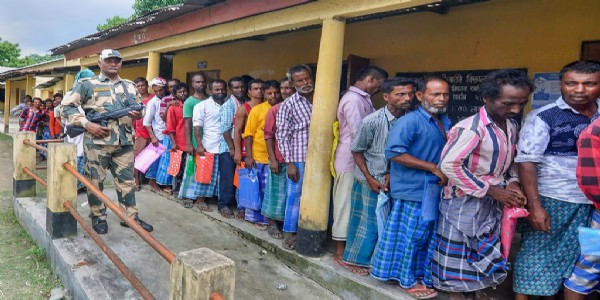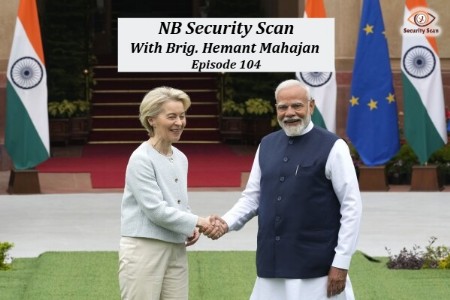#SecurityScan 35: US Banking Crisis, Iran-Saudi agreement brokered by China and much more
After Punjab, terror groups across the border are now regularly dropping arms and drugs in Jammu and Kashmir, posing challenges for the security forces.
Total Views | 344
This article is a summary of important events that have taken place in last one week affecting, India's national security.

Internal Security
Drug Terrorism With Drones from Pak-Technological solutions vital to tackling threat
The recovery of narcotics and weapons from a village close to the Line of Control in Rajouri points to the widening ambit of narco-terrorism through the use of drones emanating from Pakistan. After Punjab, terror groups across the border are now regularly dropping arms and drugs in Jammu and Kashmir, posing challenges for the security forces. Drones are difficult to detect and their easy availability gives an advantage to Pakistan. Their increasing reliance on drone-drops is proven by the substantial rise in unmanned aerial vehicles being shot down. Since keeping a vigil along the entire stretch of the border is a near-impossible task, it necessitates much greater emphasis on investing in smarter methods of detecting and deploying counter-drone technologies. Banking solely on the passive approach of simply looking or listening for drone activity is not enough to tackle the threat. Technological solutions are vital.
Drone-drop is the new form of border infiltration. The success rate of the narco-terror module in evading detection is very high, and the risk factor lower for dumping drugs inside India to earn money that is further used for terror activities.
A quick shift is imperative to exploring the induction of cutting-edge drone-monitoring equipment such as advanced radars, radio frequency analysers, acoustic sensors or optical sensors. Tests of indigenous anti-drone jammers and spoofers deployed in the Jammu and Punjab sectors have shown satisfactory results. A spoofer system hijacks a drone’s communication link by sending a wrong signal. A jammer jams radio frequencies used to operate a drone, bringing it down.
Night-domination strategies have been put in place in border areas.Having dedicated teams conversant with the vast array of drones and newer variants would help, along with deploying more personnel for surveillance activities. Catching hold of arms and drug handlers is as important as neutralising a drone.
Use of passports to travel to Pakistan for terror training stonewalled by Jammu and Kashmir Police
The Jammu and Kashmir Police has put a stop to the ISI's method of recruiting Kashmiri boys into terror ranks by taking them to Pakistan and later infiltrating them into the valley. The new regime implemented by the Jammu and Kashmir Police includes additional checks and balances, such as referring to digital evidence such as CCTV footage, photographs, video and audio clips, and quadcopter images available in police station records. Make In India:Make For World
Government sets target of achieving defence manufacturing worth Rs 1.75 lakh crore by 2024-25
The Indian government has set a target of achieving defence manufacturing worth Rs 1,75,000 crore, including defence exports of Rs 35,000 crore by 2024-25. Minister of state for Defence Ajay Bhatt said the value of production undertaken by private companies and state-run defence manufacturers in 2021-22 was Rs 86,078 crore while the amount was Rs 88,631 crore in 2020-21 and Rs 63,722 crore in 2019-20.
India's defence exports cross Rs 13,000 croreIndia's defence exports cross Rs 13,000 crore
The details of the year-wise export of military hardware were provided in the Rajya Sabha by Minister of State for Defence Ajay Bhatt while replying to a question. Bhatt said the total defence exports in 2021-22 stood at Rs 12,815 crore while it was Rs 8,435 crore in 2020-21, Rs 9,116 crore in 2019-20 and Rs 10,746 crore in 2018-19. The amount in 2017-18 was Rs 4,682 crore.
AK-203 rifles in manufacturing, testing stage
Indigenisation of AK-203 rifles will lead to self sufficiency in respect of assault rifles for Indian defence forces. The indigenous defence projects list include 155mm Artillery Gun system 'Dhanush'', Light Combat Aircraft Tejas, surface-to air missile system 'Akash', main battle tank 'Arjun', T-90 tank, T-72 tank, Cheetah helicopter and Advanced Light Helicopter Dornier Do-228.
BrahMos Aerospace set to bag USD 2.5 billion cruise missiles order from Indian Navy
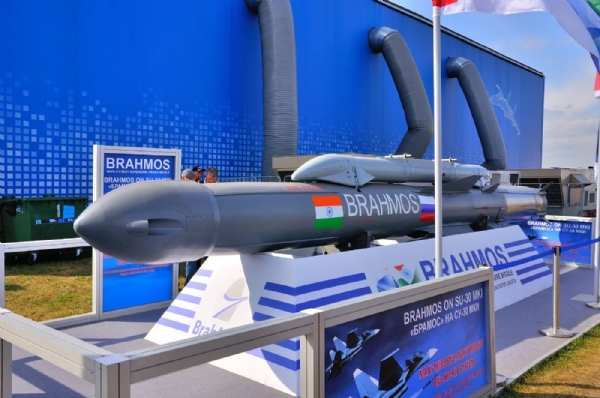
The Indo-Russian joint venture company has recently carried out test firings of the missile with a high level of indigenous content and is also going to equip the missile with an indigenous seeker too.
Tata-Lockheed Martin JV to make fighter plane wings in India
According to Lockheed Martin, the Memorandum of Understanding (MOU) envisions production of 29 fighter wing shipsets, with an option of additional shipsets, with deliveries commencing in 2025.
Economic Security
US banking crisis-Lapses in regulatory oversight led to the collapse
THE US authorities are scrambling to protect depositors’ money after the back-to-back collapse of Silicon Valley Bank (SVB), Silvergate Capital Corporation and Signature Bank, which were major lenders to the crypto sector and tech startups. In a desperate bid to affirm the stability and credibility of the American banking system, the Joe Biden administration has granted SVB customers access to their money. Depositors of Signature Bank, which was closed on Sunday by the New York state financial regulator, have been promised compensation ‘at no loss to the taxpayer’.
SVB was among the top 20 American commercial banks till last year. It is the largest bank to be shut in the US since the 2008 financial meltdown, whose prime casualties included Washington Mutual and the Lehman Brothers’ global investment bank. A link between them has surfaced: SVB’s Chief Administrative Officer Joseph Gentile had worked with Lehman Brothers as Chief Financial Officer until he quit in 2007, a year before the 158-year-old giant went bankrupt, nearly bringing down the global financial system.
President Biden has stated that he is ‘firmly committed to holding those responsible for this mess fully accountable and to continuing our efforts to strengthen oversight of larger banks so that we are not in this position again.’ It is evident that lapses in regulation — coupled with an aggressive, risk-prone monetary policy aimed at taming inflation — brought things to such a pass.
The fiasco holds a bitter lesson for US regulators and stakeholders: set your own house in order before losing sleep over smaller yet fast-growing economies.
The key takeaway for India, which was rocked by the Punjab National Bank scam in 2018, is that no one can afford to ignore the warning signs. The regulatory system needs to be proactive rather than reactive to prevent a financial bloodbath and ensure the safety of people’s deposits.
Supply Chain Security
Chip pact with US-Boost to larger role for India in global supply chain
From being a battle of corporate giants, the incredibly costly, complex and high-stakes business of making semiconductor chips has assumed the form of a geopolitical weapon. As governments respond to national security concerns brought out starkly by pandemic-era shortages and shifts in the global supply chain, India, too, has been paying more attention to ratchet up its nascent semiconductor industry with production-linked incentives. Last year, Foxconn, the Taiwanese firm that assembles Apple’s iPhones, and mining company Vedanta teamed up to build a chip-making facility in Gujarat.
The memorandum of understanding with the US on information-sharing on the semiconductor policy, commercial avenues and innovation is a boost for India’s goal to have a larger role in the electronics supply chain. Leveraging complementary strengths would work to the advantage of both countries.
The Biden administration has been proactive in pursuing a policy shift to end the heavy reliance on China and Taiwan for critical technological components. Expanding cooperation in advanced weaponry, supercomputing, semiconductors and other high-tech fields with India could be a part of its plan of ‘friend shoring’ or shifting the manufacturing of certain critical components to friendly countries. It’s an opportunity not to be missed. India’s central focus has to be on powering growth through collaborative energy and strategic alliances. Going forward, that would mean asking the US to ease restrictions on transferring defence-related and cutting-edge technology.
The India-US Commercial Dialogue’s common goals include increasing supply chain resilience, enhancing energy security and reducing overall greenhouse gas emissions. Investment in emerging technology should be welcomed.
External Security
Govt must look into safety issues with Dhruv
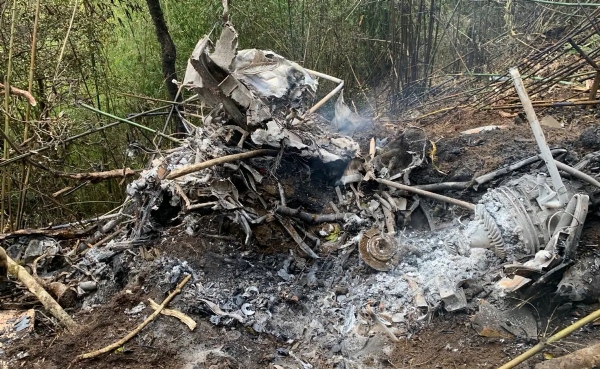
Army helicopter crashes in Arunachal Pradesh's Dirang district, search operation for pilots under way on Thursday. The ALH choppers are operated by all three defence forces including the Army, Navy and Air Force along with the Indian Coast Guard. The ALH Dhruv choppers are used in multiple roles by the Indian defence forces including transportation of men and material.
Accidents due to human error or equipment malfunction can be prevented by taking procedural and/or technical steps. Design shortcomings, however, are at a foundational level and need immediate institutional remedies.It is time that the government steps in and institutes a truly independent board of professionals to look into all issues with our ALH Dhruv programme.
India, Australia decide on slew of measures to boost defence ties
Australian Chief of Navy Vice Admiral Mark Hammond is also on 3-day visit to India.
The two Prime Ministers agreed that, as a practical step, India and Australia may continue to explore conduct of aircraft deployments from each other’s territories to build operational familiarity and enhance maritime domain awareness, according to a joint statement issued on Friday night.
Australia and India, with Japan and the United States, make up the Quad alliance that is seen as a bulwark against China's assertiveness in the Indo-Pacific region. Albanese's four-day visit included a Thursday reception aboard the INS Vikrant, India's first homemade aircraft carrier, where he announced new joint military drills.
Indian Army's Chetak Corps conduct 'Exercise Chetak Chaukas'
"Indian Army's Chetak Corps conducted Exercise Chetak Chaukas focusing on planning, preparation, familiarisation & updation of the database with all stakeholders to strengthen Rear Area Security," Indian Army's South Western Command officials said.
India's missile frigate INS Sahyadri participates in maritime exercise with French Navy
The French Navy deployed Mistral class amphibious assault ship FS Dixmude and La Fayette class frigate FS La Fayette in the exercise. "The seamless conduct of the exercise reaffirmed the interoperability and high level of cooperation between the two navies," the Indian Navy said .
India providing high availability disaster recovery in region and beyond: CDS General Anil Chauhan
The CDS said India undertook 'Operation Maitri', 'Operation Dost', which are testimony of its willingness to extend help to all possible corners of the globe.
India-Russia defence firm eyes $200 mln missile deal with Indonesia
BrahMos was established through an inter-governmental agreement in 1998 as a joint venture between India's state-run Defence Research and Development Organisation and NPO Mashinostroyenia of Russia. Western-led sanctions against Russia for its invasion of Ukraine have not impacted BrahMos production or planning.
Successful flight-test of DRDO's indigenous power take off shaft conducted on LCA Tejas
The defence ministry said the maiden successful flight-test of PTO shaft was conducted on LCA Tejas Limited Series Production (LSP)-3 aircraft.
Pakistan team sent to Myanmar to repair combat aircraft
Last year, a senior-level Pakistani military delegation visited Myanmar to inspect a defence industry complex near Yangon and participate in a workshop on JF-17 block II aircraft that Myanmar had purchased from Islamabad . Another Pakistani team had also visited Myanmar to provide technical assistance to manufacture weapons.
Centre to introduce bill to empower tri-services commanders in Lok Sabha today

The Centre on Wednesday will introduce in Parliament a bill to empower the commander-in-chief or the officer-in-command of inter-services organisations to maintain discipline and ensure proper discharge of duties among the personnel attached under them.
Govt decides to set up high-level committee to fast-track implementation of infra projects along border with China
The meeting was attended by Road Transport and Highways Minister Nitin Gadkari, Railways, Communications and IT Minister Ashwini Vaishnaw, Power Minister RK Singh, Environment Minister Bhupender Yadav and National Security Advisor Ajit Doval.
America underlines the McMahon Line: What it means for India
It is not often that America affirms India's stand on its border dispute with China. The resolution will certainly rile China. America's bipartisan articulation indicates a clear hardening of its stand against China but also possibly America's willingness to insert itself into border disputes between India and China. Many see the resolution as a shift in America's position.
Western World Countering Chinese Multi Domain War
Learning from Ukraine, Taiwan shows off its drones as key to 'asymmetric warfare'
Turbulent Nepal
Prachanda has emerged as the winner . He has risen from the ashes to become a charismatic leader of Nepal, admired by its youth. Prachanda could be destined to lead for full five years in the interests of Nepal’s stability.
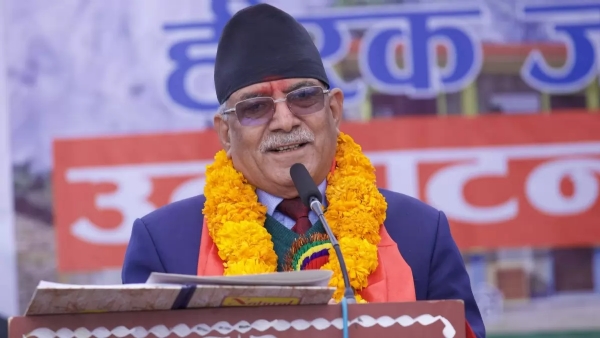
Shifting from bullet to ballot showed Prachanda’s politico-military acumen that enabled him to win the first post-conflict election. His party captured votes that outnumbered the combined tally of the Nepali Congress (NC) and the Communist Party of Nepal (Unified Marxist-Leninist) or CPN-UML.
India’s twin-pillar policy of constitutional monarchy and multi-party democracy changed to mainstreaming the Maoists and democratisation of Nepal.The geopolitical contest between the US and China for space in Nepal is prominently visible. US Under Secretary of State for Political Affairs Victoria Nuland met Prachanda in January and praised him. Other US officials who paid visits after she hit the headlines in the Kathmandu media. Prachanda has been invited to speak virtually at the US Democracy Summit in March-end. China’s new Ambassador Chen Song celebrated the new Left alliance of Oli and Prachanda, meeting both leaders several times till the alliance crumbled, which was a big setback for China
The Iran-Saudi Arabia agreement brokered by China
The Iran-Saudi Arabia conflict goes back far in history, and it will be a brave person who suggests that this agreement will see the end of a rivalry that has seen the two fight proxy wars in Yemen, Lebanon and Iraq in the last three decades and more. Both have their reason for calling a ceasefire of sorts. The Saudis want to end the debilitating war against the Iran-backed Houthis in Yemen, which directly impacts its security, while the Iranians are worried about the mounting price and domestic consequences of the US-led embargo on them.
China that was able to clinch the deal because of the equity it has in both countries. It is Saudi Arabia’s largest export market, and represents about 30 per cent of Iran’s trade.
The limits of Chinese activity are evident in Myanmar, where China has been involved in resolving its complicated ethnic quarrels for some time now. In 2016, it had persuaded three rebel groups — the National Democratic Alliance Army, the Union League of Arakan Army and the Ta’ang National Liberation Army — to participate in a biannual Union Peace Conference run by the Myanmar government.
Simultaneously, it also helped create the rebel-backed Federal Political Negotiating and Consultative Committee (FPNCC), which had sought to negotiate with the Myanmar government. But Chinese efforts have ground to a halt after it backed the military regime which ousted the government led by Aung San Suu Kyi in 2021. Neither have Chinese efforts to help resolve the Rohingya crisis worked.
The coming period will determine whether the Iran-Saudi deal will mark a turning point in global affairs for China, or remain a mere flash in the pan.
Australia is buying nuclear-powered attack submarines from the United States
It is the biggest conventional military buildup in the region since World War II. The deal will cost up to $245 billion over the next three decades and create 20,000 jobs.
China has said the deal poses serious nuclear proliferation risks and stimulates the arms race. China has been opposing the AUKUS alliance which helps Canberra to acquire the US nuclear submarines to boost its security in the face of increasing hostilities between the two countries. China says the bloc is aimed at containing its rise.
Navies of India, Australia, Japan, US, France and UK to participate in Exercise La Perouse
The two-day exercise provides an opportunity for like-minded navies to develop closer links in planning, coordination and information sharing for seamless maritime operations, according to the press release. Exercise La Perouse will include complex and advanced naval operations, including surface warfare, anti-air warfare, air defence exercises, cross-deck landings and tactical manoeuvres.
UK approves increased submarine-related exports to Taiwan, risking angering China
The value of licences granted by the British government to companies for the export of submarine-related components and technology to Taiwan totalled a record 167 million pounds ($201.29 million) during the first nine months of last year, according to UK government export licensing data. That is more than the previous six years combined.
Joe Biden wants $886 billion for defense as Ukraine continues and China looms
Biden's request earmarks $842 billion for the Pentagon with an additional $44 billion earmarked for defense-related programs at the Federal Bureau of Investigation, Department of Energy and other agencies, bringing the national security budget to $886 billion, up from $858 billion enacted last year.
Russia Ukraine War:Lessons For India
Dangerous Provocations By Russia In Black Sea
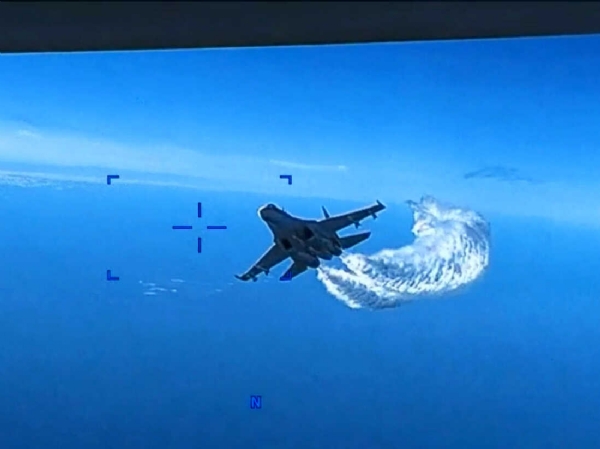
Amid the hardening of battle lines in the one-year-old Ukraine war, which has snowballed into a West-vs-Russia conflict, the crash of a US spy drone into the Black Sea marks a regrettable escalation in hostilities. According to the US military, two Russian Su-27 jets not only carried out a ‘reckless intercept’ of the MQ-9 drone while it was in international airspace but also dumped fuel on it and flew in front of it in ‘unsafe manoeuvres’.
Denying that its aircraft came into contact with the unmanned aerial vehicle (UAV), Russia has stated that the drone, which was detected near the Crimean peninsula, crashed after ‘sharp manoeuvring’. Russian Ambassador to the US Anatoly Antonov has alleged that the UAV deliberately moved towards Russian territory with its transponders turned off.
The direct confrontation between Washington and Moscow comes with both sides accusing each other of provocation, the threat of mutual retaliation looms large. This is another perilous situation that has arisen due to rivalry between the big powers. Early last month, a Chinese surveillance balloon was shot down by the US after it made an incursion into American airspace.
The prevailing mistrust and insecurity have been aggravated by the deal that the US, UK and Australia have sealed to create a fleet of nuclear-powered attack submarines. The move is aimed at countering China’s assertiveness.
--
Bharati Web




